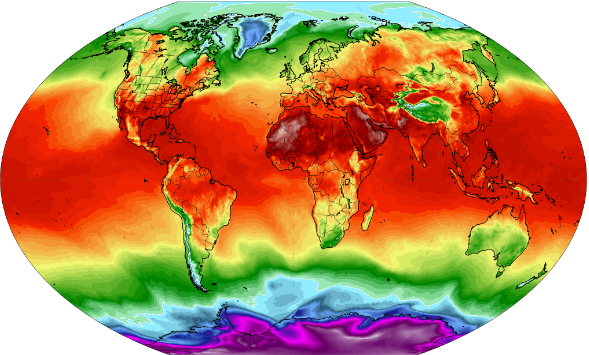2023 Summer Hottest in 2,000 Years, Studies Show
In the past few years, extreme weather has been caused by rising temperatures around the world. It was the hottest summer ever in the northern hemisphere in 2023, and it was felt across a large area. This extreme heat caused many bad things to happen, like wildfires in the Mediterranean, damaged infrastructure in Texas, and power lines in China that were overloaded.
Scientific Analysis & Findings
The study found that temperatures on land between 30 and 90 degrees north latitude were, on average, 2.07 degrees Celsius higher in the summer of 2023 than they were before industrialization. There were about 2.2 degrees Celsius more warm days than the long-term average from 1 AD to 1890. This big increase shows again how serious recent trends in global warming have been.
Contributing Factors to the Heat
El Niño, a weather trend that is often linked to higher global temperatures and has been linked to longer and more severe heatwaves as well as prolonged drought periods, made last year’s very hot summer even worse.
Impact on Human Health
A study in PLOS Medicine looked at the mental health effects of these growing heatwaves and found that they caused about 1% of global deaths worldwide each year from 1990 to 2019, which is about the same rate as the global COVID-19 pandemic. Asian areas had more than half of these heat-related deaths, while Europe had the highest death rate per person from heatwaves.
What is El Niño climate pattern?
- El Niño is a weather pattern in which the Pacific Ocean warms up in a way that isn’t normal near the equator. This changes the way weather trends work around the world.
- El Niño events happen about once every two to seven years, and they are most common in the winter.
- As a result of El Niño, rainfall patterns can change a lot. For example, it can rain more in the southern US and Peru while it droughts in Indonesia and Australia.
- The event was named “El Niño,” which in Spanish means “the Christ Child,” by fishers from Peru because it happens so often in December.
- El Niño can cause world temperatures to rise and mess up marine food chains. These effects can last for up to a year.
- Each El Niño event is different in terms of how strong it is, how long it lasts, and how much it affects different areas.
- Most of the time, El Niño is strongest in the winter, but its effects can be felt all year long.
- It is important to understand and keep an eye on El Niño events in order to identify and get ready for weather-related events like droughts, floods, and changes in crop yields.
Month: Current Affairs - May, 2024
Category: Environment Current Affairs








